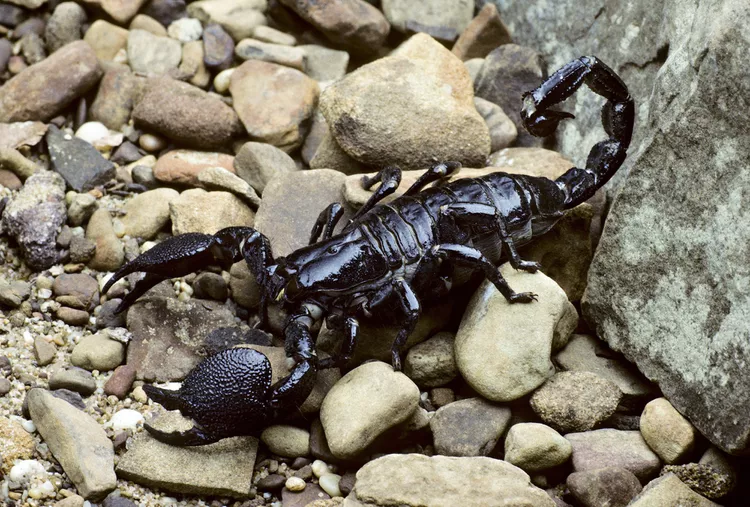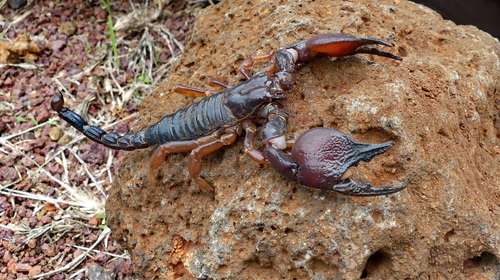
Description
Scientific Name: Centruroides vittatus
A smaller species is the striped scorpion. Total body length ranges from 1″ to about 2 1/2- 3″, with males being slightly longer and leaner. They come in a variety of hues and patterns, but are often light orange or reddish in colour with two dark, longitudinal stripes on their carapace and a dark triangular mark on their head. Oklahoman and Kansasn specimens are darker with pale orange. West Texas specimens often have lighter yellow and are paler in colour.
Habitat
These scorpions can be found all throughout the United States, including Texas, Oklahoma, Kansas, and northern Mexico. They are frequently observed cohabiting in huge groups below flat stones, close to ponds, and in cattle pastures that are littered with rocks.
Behavior
Centruroides do not burrow and are vigorous foragers. They are referred to as “bark scorpions” and have a clear affinity for dead vegetation, downed logs, and habitations. They frequently climb, and attics are frequently mentioned in complaints in residences. Scorpions spend the day hiding out and come out to play at night. This behavior aids in maintaining water balance and thermoregulation of temperature. A waxy cuticle covers their bodies, which also prevents water loss. The scorpion cuticle fluoresces under ultraviolet light, or a black light, for reasons that are still unknown.
As Pet

Housing:
Bark Scorpions, in contrast to other scorpions, usually coexist peacefully in groups. These scorpions commonly reproduce in captivity, and a colony of them will fit in a typical ten gallon long terrarium.
Heating and Lighting:
The ideal temperature range for Texas Bark Scorpions is between 75 and 80 degrees Fahrenheit. This species may often be kept at room temperature for the most of the year. In the winter, a ceramic heat emitter or under-tank heating pad of the proper size can be used to maintain the necessary temperature.
Substrate and Furnishings:
It may not be required to mist this species because they thrive in environments with humidity levels between 60 and 80%, however sprinkling a small portion of the cage once a week may be helpful. The substrate might be made of peat moss and sand or coconut fibres. Along with stacks of cork bark or other hiding places with lots of crevices the scorpion can hide in, a shallow water dish should be offered.
Nutrition
As adults, this species normally consumes 1 or 2 insects every week. The young of this species will eat 3–4 pinhead crickets or wingless fruit flies per week.
Handling
The swift Texas Bark Scorpion is quick to sting when threatened. Although this species isn’t thought to be particularly dangerously venomous, it is said that its sting is highly painful. It is not advised to handle.
Table





